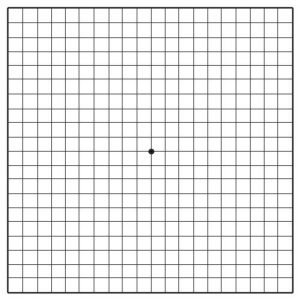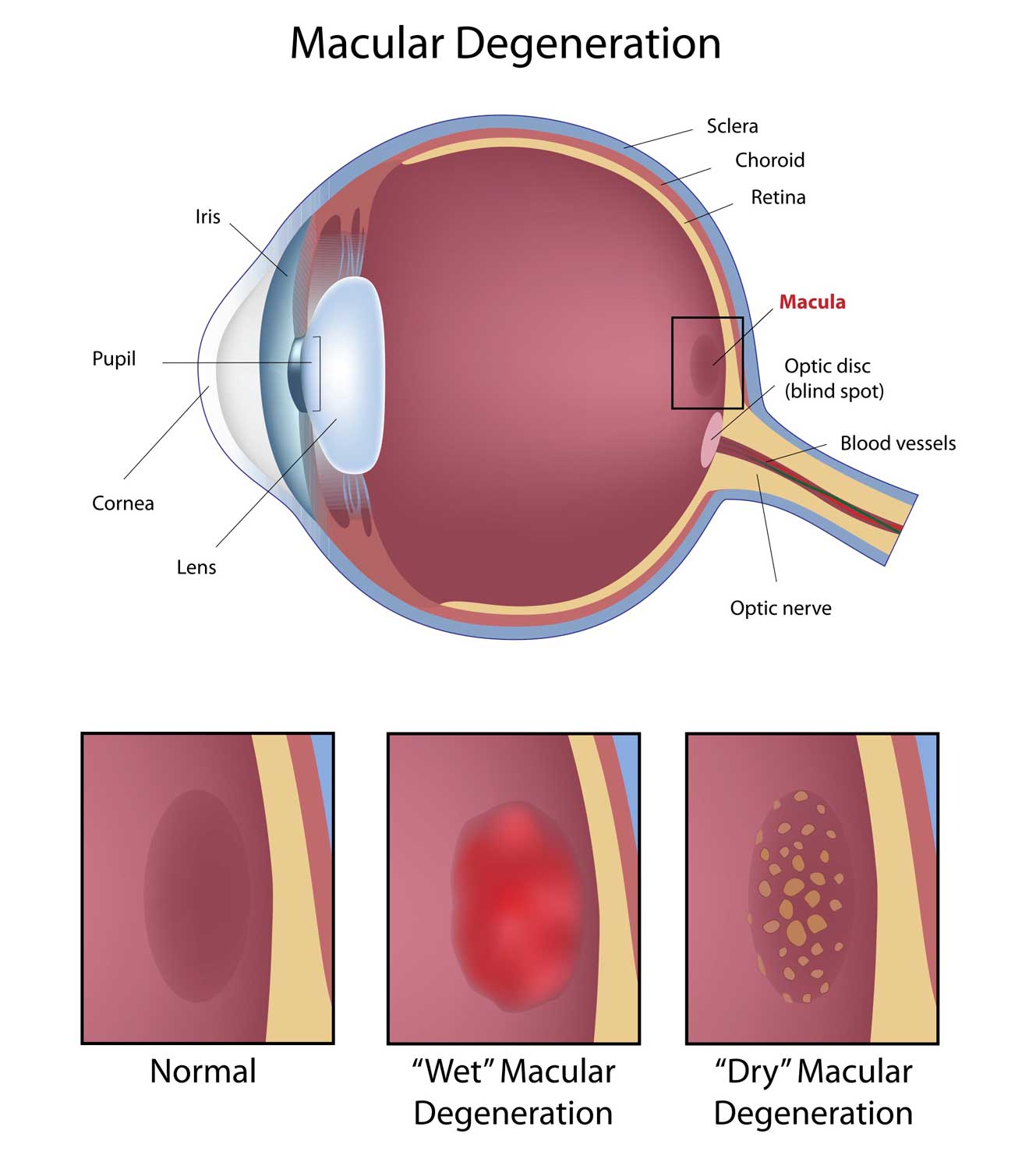Macular Degeneration
What is age-related macular degeneration (AMD)?
Macular degeneration is an eye disease that can gradually diminish sharp, central vision. Our central vision is what we use to see objects clearly, and our clearest vision comes from the bull’s-eye central part of the retina called the macula. In some people, AMD advances so slowly that it will have little effect on their vision as they age. But in others, the disease progresses faster and may lead to difficulty doing normal tasks of daily living, such as reading normal size print or driving.
How does AMD damage vision?
The retina is a paper-thin tissue that lines the back of the eye and sends visual signals to the brain. In the middle of the retina is a tiny area called the macula. The macula is made up of millions of light-sensing cells, called photoreceptors, that help to produce central vision.
Macular degeneration occurs in two forms:
Who is most likely to get Macular Degeneration?
The greatest risk factor is age and having a genetic predisposition. Although macular degeneration may occur during our 40’s and 50’s, studies show that people over age 60 are clearly at greater risk than other age groups. For instance, a large study found that people in middle-age have about a 2 percent risk of getting AMD, but this risk increased to nearly 30 percent in those over age 75. Early detection by having annual eye exams is recommended for anyone over the age of 40 with a family history of macular degeneration.
Other AMD risk factors include:
What are the symptoms?
Both dry and wet AMD are painless. The most common early sign of dry AMD is blurred vision which is not correctable by regular glasses. As fewer cells in the macula are able to function, the eye’s central detail vision becomes less clear. Identifying faces or reading small words can become difficult. Early on, this blurred vision will go away in brighter light. Some people notice small areas of blurry central vision with driving, decreased clarity with night vision, and slower dark adaptation.
Whereas dry atrophic macular degeneration can slowly affect the vision, wet macular degeneration often causes a sudden change in the central vision.
How is it detected?
 Your eye doctor will be checking for AMD at your yearly eye exam. If you are over 60 and have had recent changes in your central vision, you will need to be seen sooner. Call your eye doctor immediately if you have any new blurry vision. To look for signs of the disease, your doctor will use eye drops to dilate, or enlarge, your pupils. Dilating the pupils allows your eye care professional to view the back of the eye better.
Your eye doctor will be checking for AMD at your yearly eye exam. If you are over 60 and have had recent changes in your central vision, you will need to be seen sooner. Call your eye doctor immediately if you have any new blurry vision. To look for signs of the disease, your doctor will use eye drops to dilate, or enlarge, your pupils. Dilating the pupils allows your eye care professional to view the back of the eye better.
You may also be asked to view an Amsler grid, a pattern that looks like a checkerboard. Early changes in your central vision will cause the grid to appear distorted, a sign of AMD.
How can it be treated?
There are no current surgical or medical treatments for dry AMD. Hundreds of studies have suggested or proven that eating certain foods, taking dietary supplements, and leading a heart-healthy lifestyle may slow the progress of the disease. Some studies have even shown results of reversal some of the signs and symptoms of macular degeneration. Talk to your optometrist or ophthalmologist about their recommendations for the best ways that you can prevent or slow down macular degeneration in your eyes.
Retinal eye surgeons and other trained ophthalmologists can treat wet AMD with a medication that’s injected into the eye. Because these medications, such as Avastin, Lucentis, and Eylea, are short acting, they require re-treatment is every 4 to 6 weeks in many cases. Newer injectable medications are being studied that may last longer. Another treatment called PDT involves aiming a strong light beam onto the leaky blood vessels to destroy them.
What research is being done?
The National Eye Institute is funding a number of research studies to learn what causes AMD and how it can be better treated. For instance, in the Age-Related Eye Diseases Study (AREDS), researchers are assessing the aging process in the eyes of thousands of older people to discover the earliest signs of AMD. The same study is also evaluating the effects of certain vitamins and minerals in preventing or slowing the progress of AMD. Those results are expected to be released soon.
At the same time, other scientists are trying to learn more about how the cells in the retina work. This knowledge will allow them some day to pinpoint the cause of the disease and design methods to prevent it.

